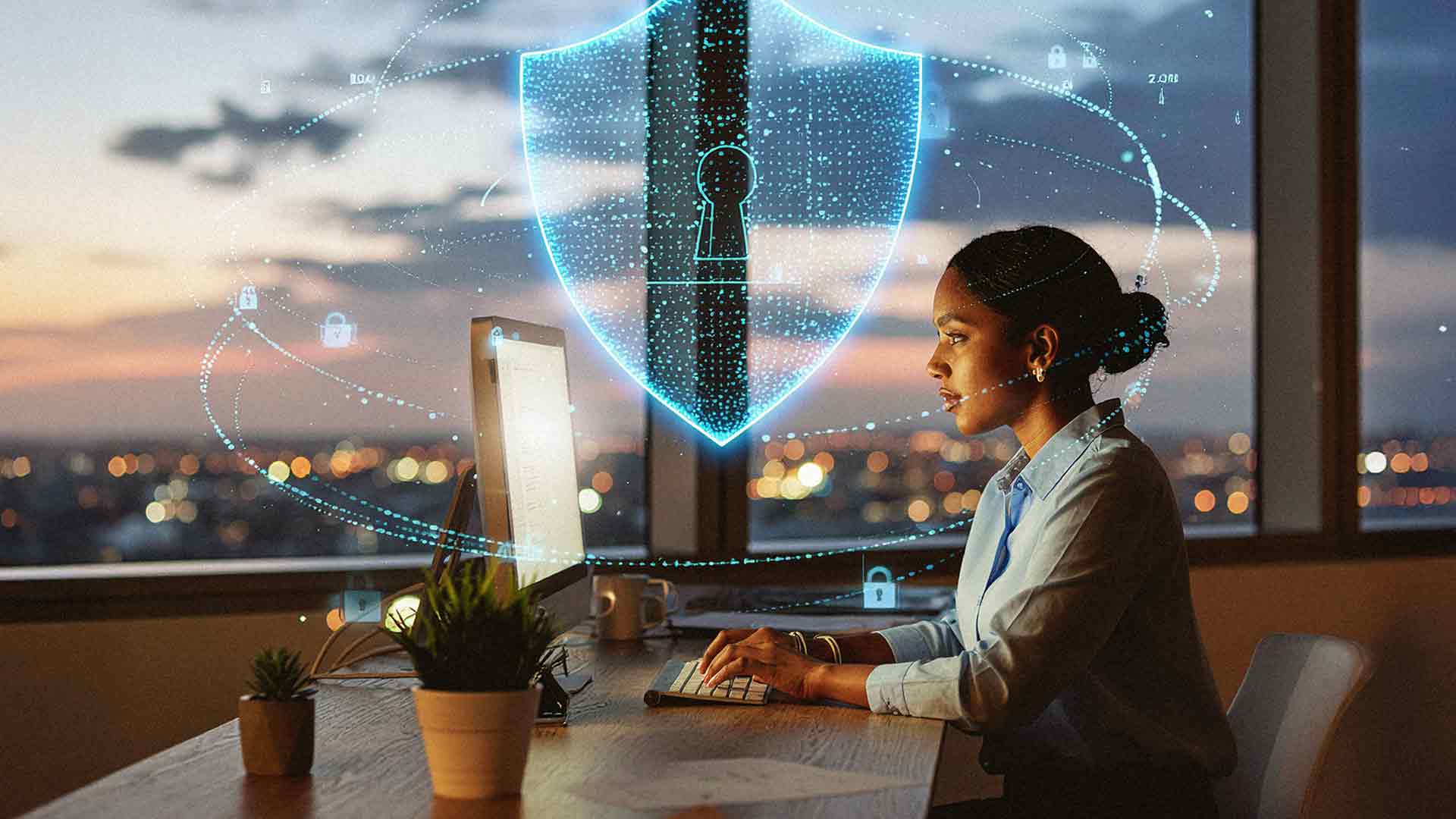Why Cybersecurity Awareness Month Isn’t Just October, It’s A Year-Round Strategy
October 15th, 2025 | 6 min. read

Every October, organizations across the country recognize Cybersecurity Awareness Month, an initiative that encourages businesses and individuals to take security seriously. It is a valuable opportunity to spotlight best practices, review company policies, and remind teams to stay alert.
But here’s the truth: cyber threats do not take a month off.
Hackers operate 365 days a year, targeting small and midsize businesses (SMBs) that let their guard down once the campaign banners come down. Building a truly resilient company means turning awareness into consistent action.
At AIS, we encourage our clients to view cybersecurity not as a seasonal campaign but as an ongoing culture. Let’s explore how you can make that shift and keep your business protected all year long.
Awareness Month Is a Starting Line, Not the Finish Line
Cybersecurity Awareness Month serves as a powerful reminder that every business is at risk, but awareness is only the first step. The real goal is to transform that awareness into a habit.
Think of October as your annual reset button—a time to evaluate progress, identify gaps, and recommit to training and best practices. Once the month ends, the real work begins.
Threats evolve constantly, from new phishing scams to emerging ransomware groups. Without a year-round strategy, the protections you put in place during October can quickly become outdated by January.
Consistency is key. The companies that maintain momentum are the ones that stay ahead of attackers.
The Cost of Treating Cybersecurity as a Once-a-Year Event
Cybersecurity cannot be effective if it is reactive or sporadic. When businesses treat October as their only focus month, they risk falling behind on patches, training, and emerging threats.
A single unpatched system, weak password, or outdated backup can lead to a breach that costs far more than any prevention plan.
Consider these ongoing realities:
- Phishing attacks happen daily, not seasonally.
- Software vulnerabilities are discovered weekly.
- Compliance standards evolve every year.
- Ransomware groups continuously refine their methods.
Related Article: What’s the Real Cost of a Ransomware Attack on a Small Business?
Waiting for an annual reminder leaves too much to chance. Cybersecurity awareness should become part of every department’s rhythm, just like financial reviews or safety inspections.
Building a Year-Round Cybersecurity Framework
So how do you move from awareness month to sustained readiness? It starts with creating a cybersecurity framework that is continuous, repeatable, and built into your organization’s culture.
Here’s what that looks like in practice:
Quarter 1: Review and Refresh
Start the year with an internal audit.
- Review your current cybersecurity policies.
- Test your backups and recovery procedures.
- Update employee access permissions and remove unused accounts.
- Verify software and hardware patch levels.
This sets a strong foundation for the rest of the year.
Quarter 2: Train and Test
Focus on your people.
- Conduct security awareness training and phishing simulations.
- Introduce new employees to your cybersecurity culture.
- Encourage reporting of suspicious emails or system behavior.
The goal is to keep cybersecurity fresh in everyone’s minds, not just during October.
Quarter 3: Strengthen and Simulate
By midyear, test your defenses under pressure.
- Conduct a tabletop exercise simulating a ransomware or phishing incident.
- Review your incident response plan for clarity and speed.
- Validate that all data is being backed up securely and retrievably.
These exercises help you prepare for real-world events and identify weaknesses before attackers do.
Quarter 4: Communicate and Celebrate
As Cybersecurity Awareness Month returns, celebrate your team’s progress.
- Share success stories from employees who spotted and reported phishing attempts.
- Publish a short internal report on metrics such as reduced click rates in simulations or improved patching times.
- Reinforce that awareness is a team effort, not a once-a-year obligation.
This cyclical approach transforms cybersecurity from an annual campaign into a continuous practice.
Making Awareness a Habit
Habits form through repetition, reinforcement, and recognition. When cybersecurity becomes part of daily operations, it feels natural instead of forced.
Here are ways to embed awareness year-round:
- Integrate training into onboarding: Every new hire should receive a basic cybersecurity orientation.
- Send monthly micro-tips: Short, actionable emails or posts help reinforce lessons without overwhelming staff.
- Gamify awareness: Offer small rewards for employees who report suspicious messages or complete simulations successfully.
- Use real examples: Share anonymized stories of breaches in your industry to make risks tangible.
- Hold quick refresh sessions: 15-minute reminders each quarter can dramatically reduce risky behavior.
A culture of awareness grows when employees feel confident rather than afraid. Empower them to ask questions, verify requests, and speak up when something seems off.
SMB Benefits: Year-Round Cybersecurity Awareness
Large corporations have teams dedicated to cybersecurity. Small and midsize businesses often rely on general IT staff or outside partners. This makes consistency even more critical.
SMBs that maintain awareness throughout the year are more agile and resilient. They recover faster from incidents and prevent many breaches entirely.
By investing in year-round education and monitoring, SMBs can:
- Protect customer trust and reputation.
- Avoid costly downtime and data loss.
- Meet evolving compliance requirements with less stress.
- Turn cybersecurity into a competitive advantage.
Customers increasingly prefer to work with businesses that take security seriously. A visible, ongoing commitment to protection can strengthen client relationships and open new opportunities.
The Role of Leadership in Sustaining Momentum
Cybersecurity culture begins at the top. When leadership demonstrates consistent engagement, employees follow suit.
Leaders can sustain awareness by:
- Including cybersecurity metrics in executive reports.
- Budgeting for continuous training and technology updates.
- Encouraging collaboration between IT, HR, and operations teams.
- Recognizing cybersecurity successes during company meetings.
When leaders talk about cybersecurity as part of strategy, not just compliance, it becomes part of the organization’s identity.
Partnering for Continuous Improvement
Even the most dedicated internal teams cannot manage every aspect of cybersecurity alone. Partnering with a managed IT and security provider gives SMBs access to continuous monitoring, expertise, and proactive support.
A strong provider helps you:
- Stay informed about emerging threats.
- Monitor systems around the clock.
- Conduct periodic risk assessments.
- Deliver ongoing employee training and phishing tests.
- Keep software and infrastructure up to date.
Working with a partner ensures your cybersecurity efforts do not fade after October. It adds accountability and structure to your ongoing defense strategy.
Turning Awareness into Measurable Results
Awareness without measurement can feel like guesswork. To keep your efforts on track, establish simple metrics that reflect progress, such as:
- Reduction in phishing click rates.
- Increased reporting of suspicious activity.
- Shorter time to apply patches or updates.
- Fewer unplanned outages caused by security incidents.
These benchmarks help you evaluate what’s working and where to improve. They also demonstrate the tangible impact of continuous awareness on business performance.
Celebrating Cybersecurity Year-Round
Awareness does not have to be tedious. You can make cybersecurity engaging through creativity and recognition.
Some ideas include:
- Hosting quarterly “security spotlight” sessions with guest speakers.
- Creating friendly competitions between departments for phishing detection.
- Sharing monthly cybersecurity trivia or myth-busting facts.
- Offering small prizes for employees who complete training modules early.
Positive reinforcement helps sustain energy and enthusiasm, making security part of your organization’s DNA.
The Final Say: Cybersecurity is a 365-24/7 Mindset
Cybersecurity Awareness Month is an excellent reminder that protection starts with people, but true resilience comes from consistency. Awareness must extend beyond October to every month of the year.
By building habits, measuring progress, and fostering a culture of curiosity and accountability, you transform cybersecurity from an obligation into a shared value.
At AIS, we help small and midsize businesses maintain that momentum through continuous training, 24/7 monitoring, and proactive guidance. Together, we can keep your organization protected. Not just in October, but all year long.
A true southerner from Atlanta, Georgia, Marissa has always had a strong passion for writing and storytelling. She moved out west in 2018 where she became an expert on all things business technology-related as the Content Producer at AIS. Coupled with her knowledge of SEO best practices, she's been integral in catapulting AIS to the digital forefront of the industry. In her free time, she enjoys sipping wine and hanging out with her rescue-dog, WIllow. Basically, she loves wine and dogs, but not whiny dogs.
Topics:



